Click here and press the right key for the next slide (or swipe left)
also ...
Press the left key to go backwards (or swipe right)
Press n to toggle whether notes are shown (or add '?notes' to the url before the #)
Press m or double tap to slide thumbnails (menu)
Press ? at any time to show the keyboard shortcuts
Why Do Some Claim to Visually Experience Red?
why?
‘If someone with normal color vision looks at a tomato in good light, the tomato will appear to have a distinctive property—a property that strawberries and cherries also appear to have, and which we call ‘red’ in English’
(Byrne & Hilbert 2003, p. 4)
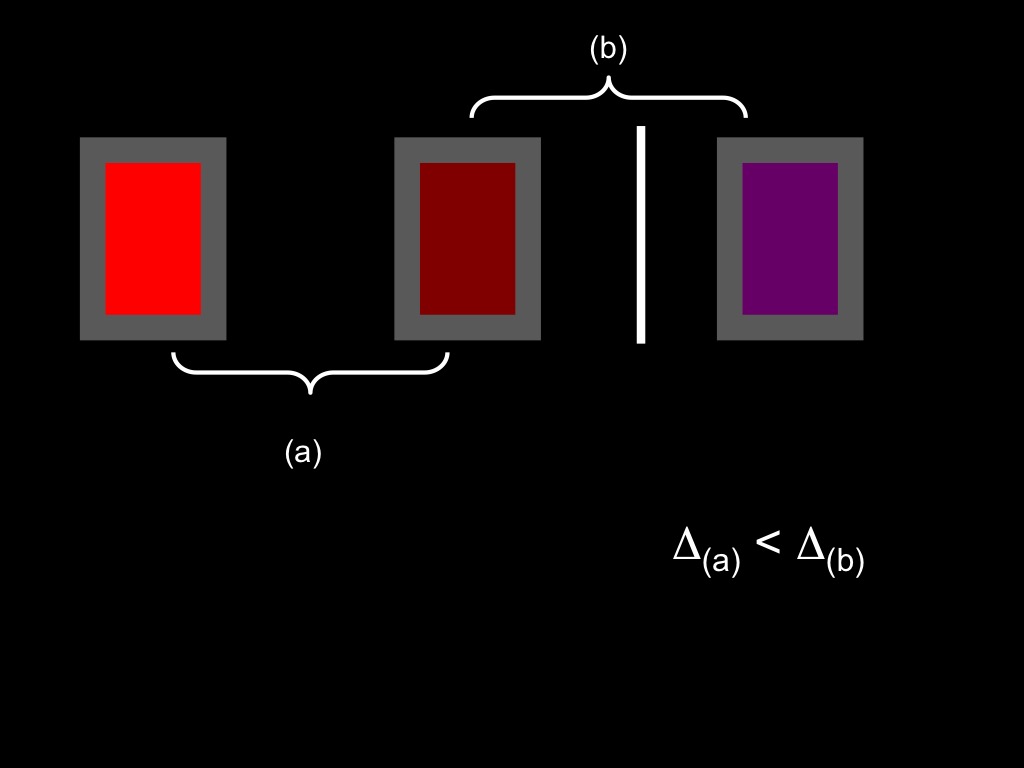
1. The second sequence of sensory encounters, (b), differ from each other more in phenomenal character than the first sequence of sensory encounters, (a), differ from each other.
2. This difference in differences in phenomenal character is a fact in need of explanation.
3. The difference cannot be fully explained by appeal only to perceptual experiences as of particular shades.
4. The difference can be explained in terms of perceptual experiences as of categorical colour properties.
5. There is no better explanation of the difference.
2.5B
7.5BG
2.5BG
odd ball
odd ball
vMMN (visual mismatch negativity): an event-related potential thought to index pre-attentive change detection in the visual cortex
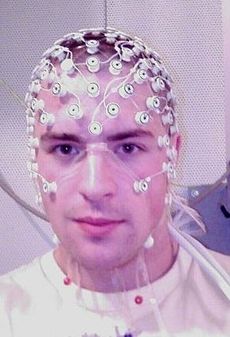
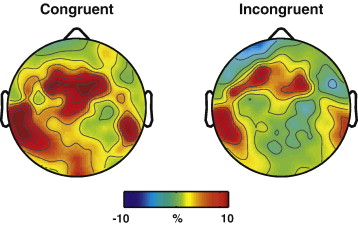
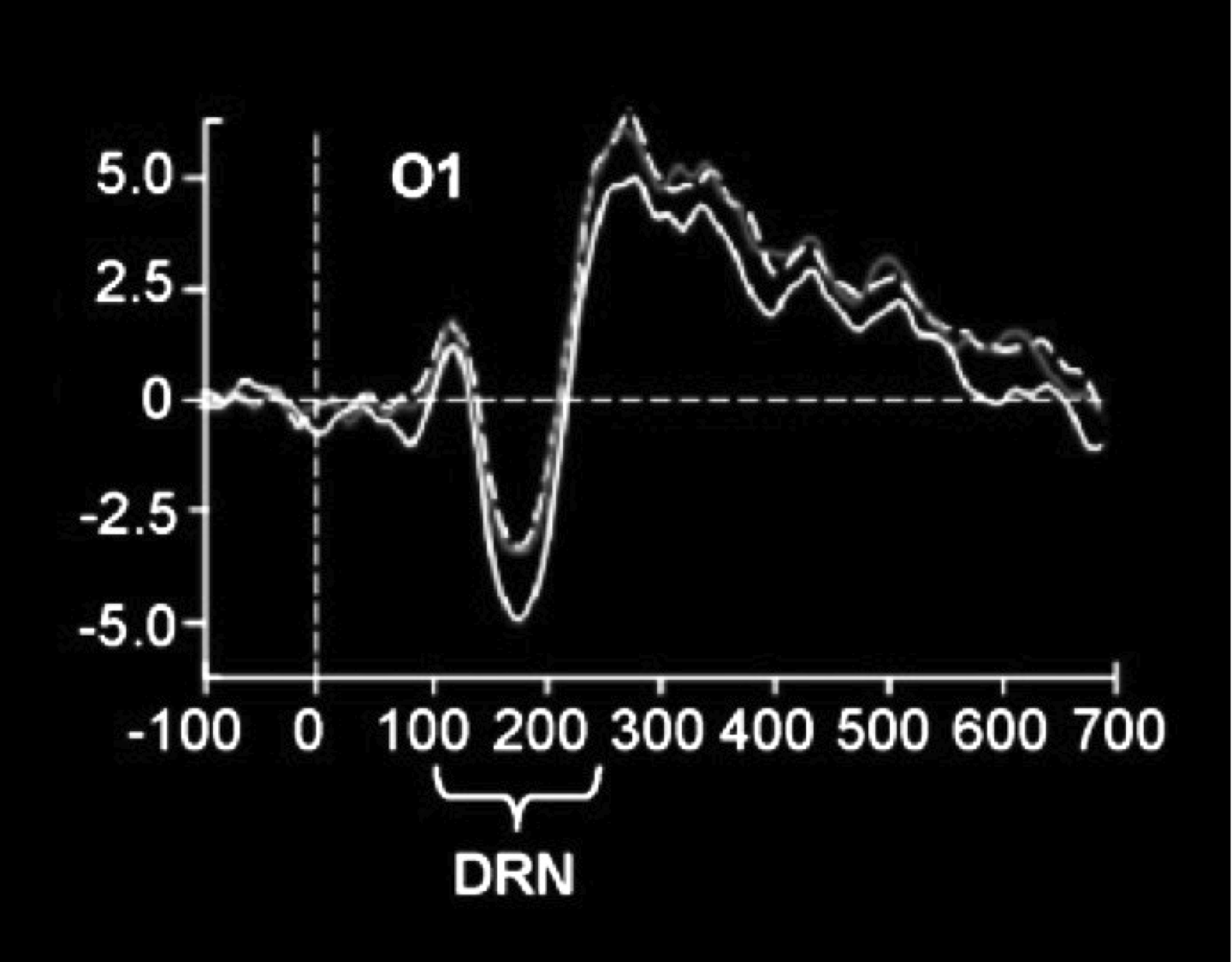

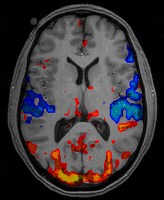
- better spatial resolution
- limited temporal resolution
- subject can't move
vMMN (visual mismatch negativity): an event-related potential thought to index pre-attentive change detection in the visual cortex

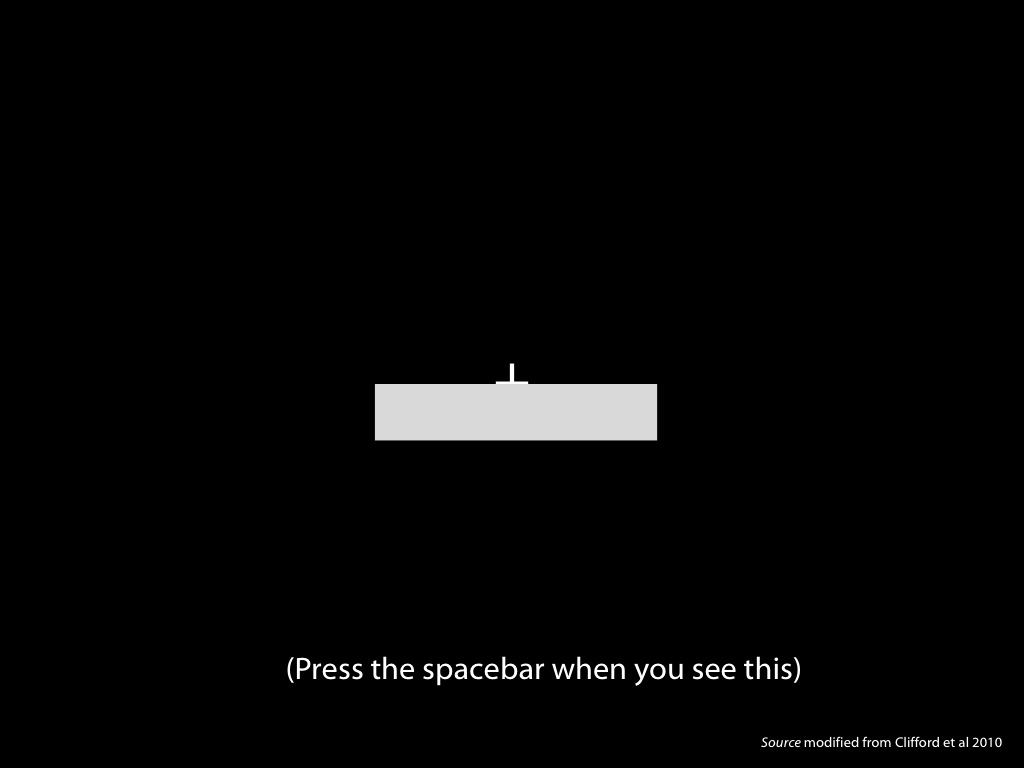
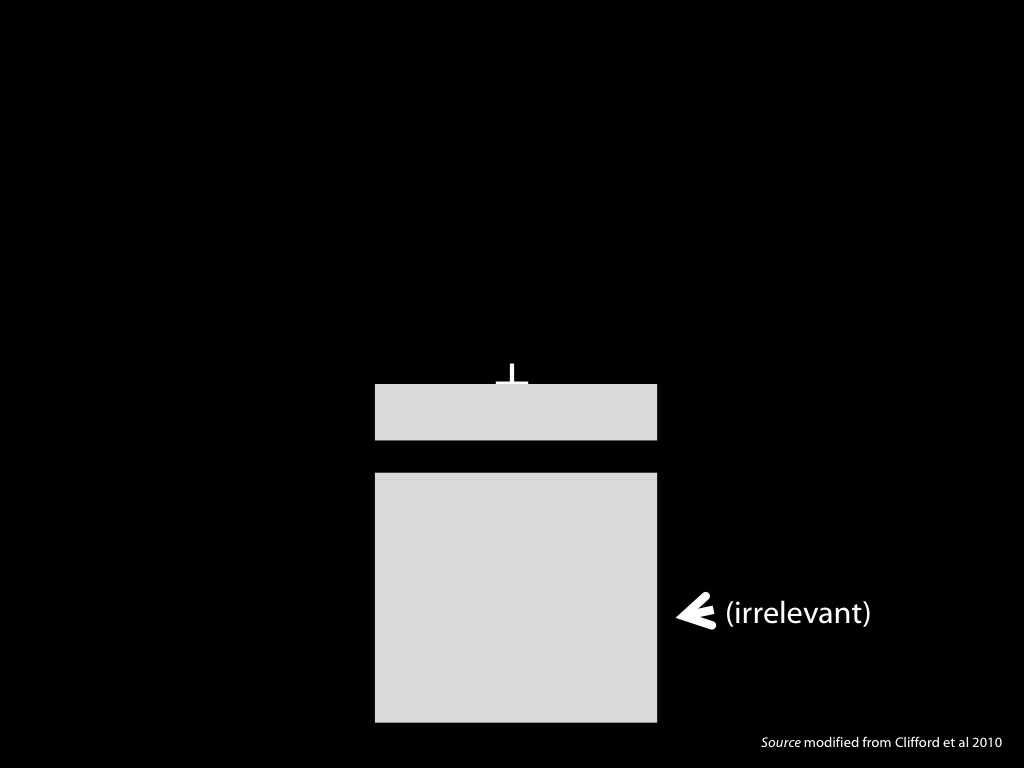
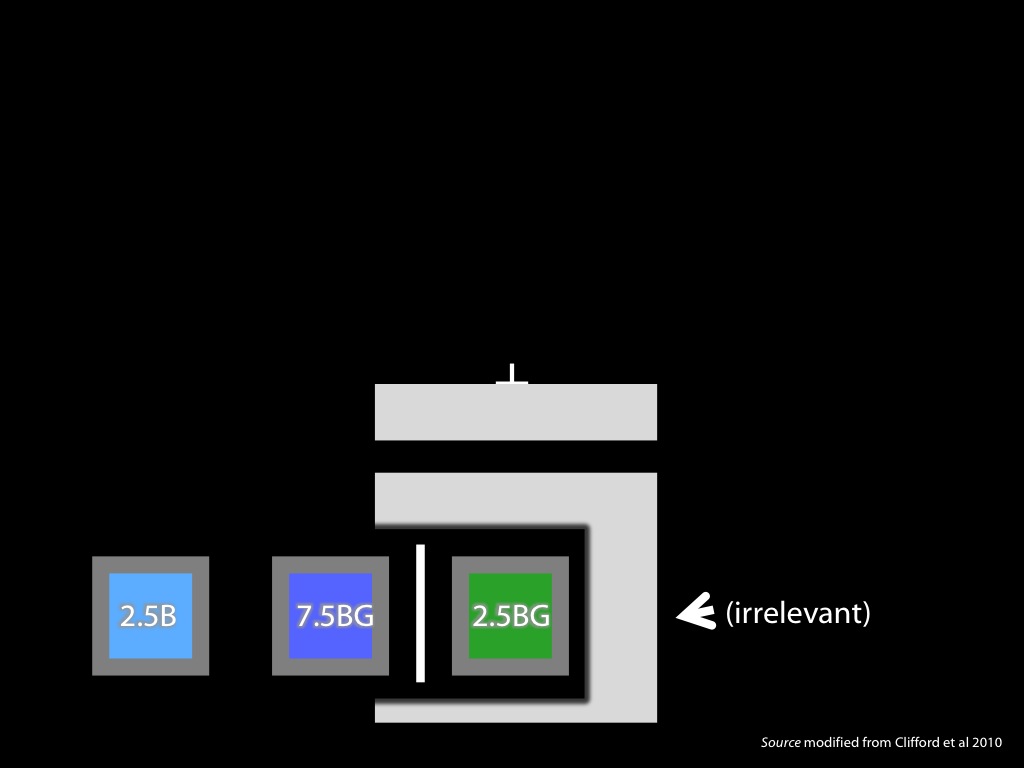
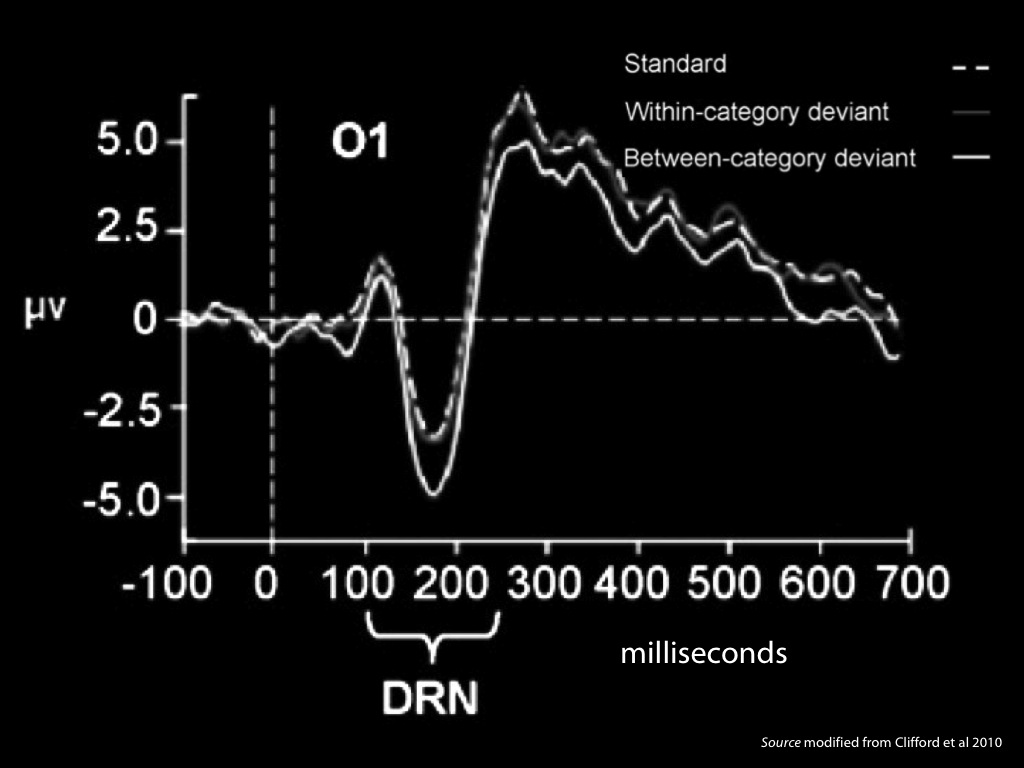
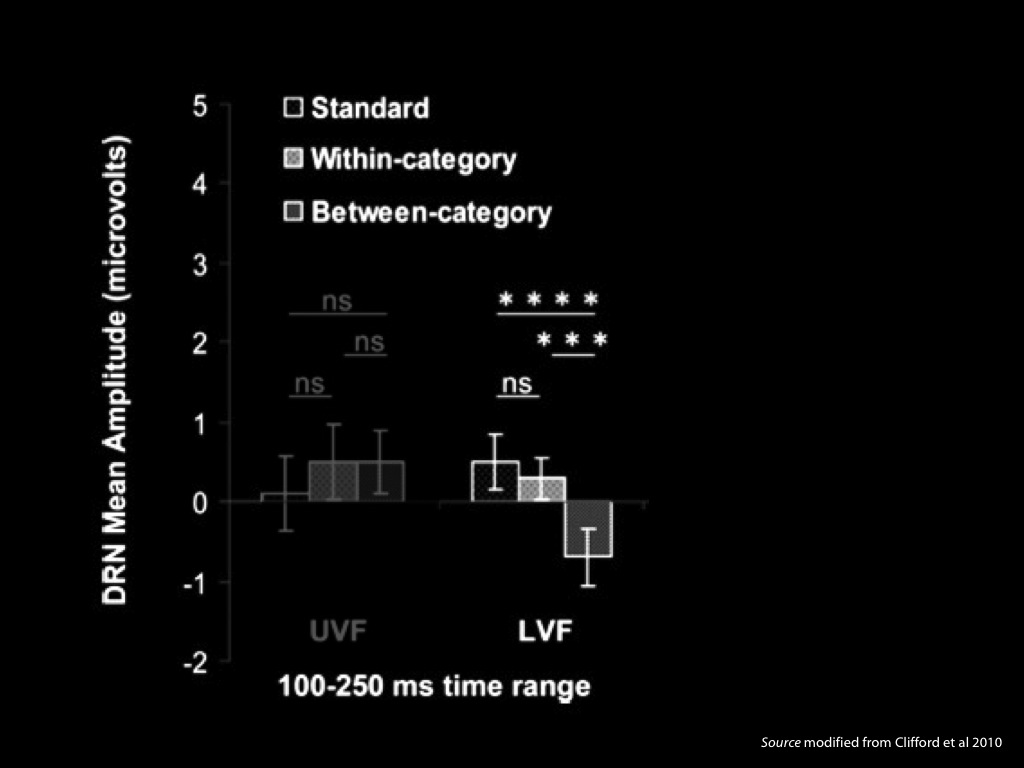
why?
Mastering some colour words leads to
pre-attentive, automatic capacities to disciminate categorical colour properties
corresponding to those words.
How?
Option 1: sensations
Option 2: misinterpretation
“Discriminable wavelengths seem to be categorized together because they appear perceptually similar”
(Bornstein 1987: 288-9).